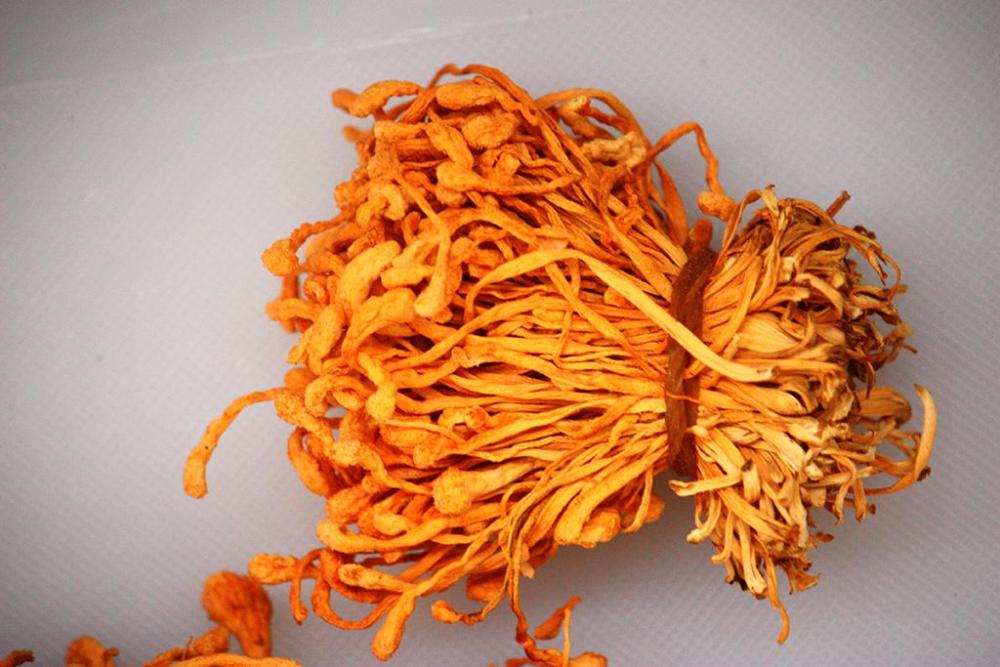On 11/2/2022 at 3:04 PM, SusieQ said:About this word cordycep. A word new to me. So I looked it up and found this definition: " Cordyceps is a genus of parasitic fungi that grows on the larvae of insects."
Unfortunately, you have stumbled upon an incomplete definition.
Cordycep sinensis is a parastic fungi that grows on the larvae of insects. There are over 400 types of cordyceps. Non-parasitic human-bred varieties have become mainstream in recent years. What I ate (and regularly eat) is cordyceps militaris, a non-parasitic type. It is cultivated locally and often served in chicken soup.
Dried Cordycep Militaris
Fresh Cordyceps Militaris
Although I would have no objection in principle to eating cordycep sinensis (I've eaten insects and I've eaten fungi, so I can save time and eat them together), sinensis is gathered from the wilds of the high Tibetan Himalayas and is, as a result, prohibitively expensive. It would be about $300 USD for that bowl of soup.
Cordycep sinensis
As to the word 'cordycep', it is derived from the Greek kordulē meaning ‘club’ and latin caput meaning 'head', presumably describing the shape.
There are very, very few English menus outside of the largest cities (Beijing, Shanghai etc). Most of those in Liuzhou, I've translated! On menus most places, they would use the Chinese name, 虫草 (chóng cǎo) for sinensis and 虫草花 (chóng cǎo huā) for militaris. That last character in militaris means 'flower(s)' and indicates that it is only the fungus without the larvae. Even if someone misread it, the price would soon alert them. Militaris is very cheap.




